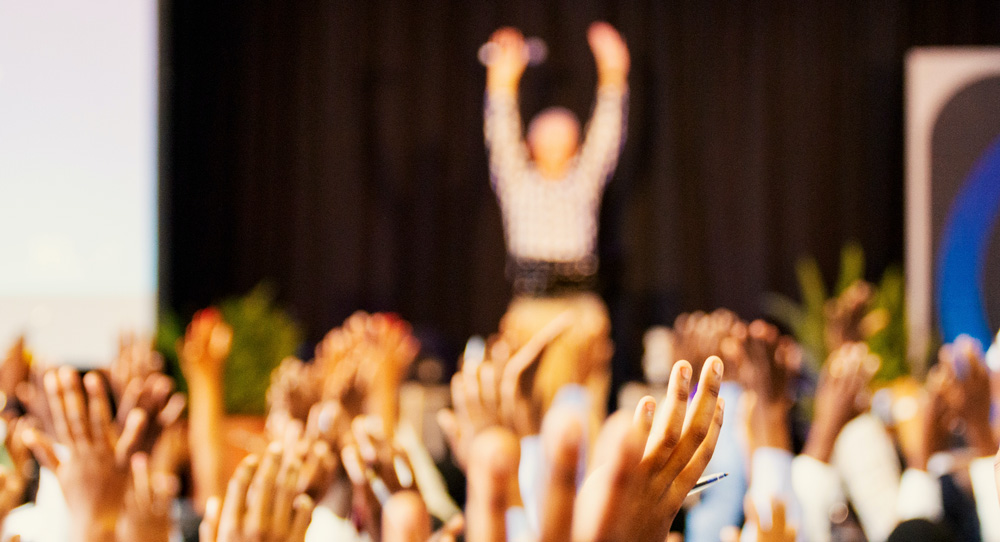Getting Students Involved in School Events: Marketing for Students
School events, from sports matches to extracurricular activities, form an essential part of a student’s holistic development. These events promote teamwork, leadership, and skill-building. Yet, often, schools face challenges in drumming up excitement and participation.
To help tackle this, here are marketing and promotion strategies tailored to appeal directly to students.
1. Understanding the Student Perspective
Prioritizing engagement over mere information is pivotal when reaching out to students. Instead of simply relaying details about an event, it's crucial to captivate their attention. Utilizing intriguing teasers, eye-catching visuals, or interactive content that aligns with their interests and sensibilities can greatly enhance engagement.
Furthermore, tapping into the power of peer influence can significantly boost attendance. Students often gravitate towards events that their friends are attending. To capitalize on this, encourage group participation by offering incentives or discounts to those who attend in groups or with friends.
2. Utilize Digital Platforms Effectively
Social Media Platforms:
- Instagram: With features like Stories, Reels, and IGTV, Instagram allows varied content formats, including photos, short videos, and longer video segments.
- Facebook: While its user base is aging, Facebook Events remains a powerful tool for organizing and promoting events.
- Twitter: Useful for real-time updates and to engage with a wider audience using hashtags.
- Snapchat: Its geofilters can be especially effective for event promotions targeted at a specific location.
- TikTok: Given its popularity among younger audiences, creating viral or engaging content around an event can generate buzz.
Collaboration Platforms:
- Discord: Originally a platform for gamers, Discord has grown into a space for communities of all kinds and can be used to organize and promote events.
- Zoom: With the rise of virtual events due to the pandemic, Zoom became a popular choice for webinars, lectures, and other virtual gatherings.
Campus-Specific Platforms:
Many universities and colleges have their own platforms or apps for campus events and student activities.
Postering and Digital Bulletin Boards:
Platforms like Canva allow students to create digital posters, which can then be shared on digital bulletin boards or through social media.
Email Marketing Platforms:
Mailchimp, SendinBlue, and other email platforms can be used to send out newsletters and event updates to subscribers.
Group Messaging Apps:
WhatsApp, Telegram, and GroupMe are popular for group communications and can be used to share event details within specific communities or groups.
3. Visual Appeal is Key
Attention-grabbing posters: Design vibrant posters with a mix of graphics and essential details. These posters can be physical — placed around the school — and digital for online platforms. Incorporate interactive elements like QR codes, leading to event registration or more details, enhancing engagement from viewers.
Videos and teasers: Create short, fun video snippets or teasers about the event. It could be behind-the-scenes footage, interviews with participants, or just a creative promotional video. Use dynamic transitions, music, and sound effects that resonate with your target audience to keep the content lively and engaging.
Infographics and visuals: Break down the event details into easy-to-digest, visually appealing infographics. This format is particularly effective for sharing on social media platforms where users prefer quick information.
Engaging typography and graphics: Combine modern typography with unique illustrations or graphics to make your promotional materials stand out. Using hand-drawn elements or collaborating with student artists can add authenticity.
Photo galleries: Showcase past events or give a sneak peek of the preparations for the upcoming event using photo galleries. Sharing these on platforms like Instagram or Facebook albums can pique interest.
Interactive content: Consider integrating augmented reality (AR) components in your promotional materials. For instance, scanning a poster with an AR app could bring a 3D model or animation to life, providing more details about the event.
Color psychology: Understand and utilize the emotions and reactions that different colors can invoke. For instance, red may convey excitement and urgency, while blue can signify trust and calm.
4. Offer Incentives and Rewards
Early Bird Offers: For events that require tickets or registration, offer discounts or additional perks for those who sign up early.
Loyalty Points or Badges: Consider a system where students get loyalty points or badges for attending events. These can be redeemed later for privileges or goodies.
5. Collaborate with Student Influencers
Engage with Student Leaders: Every school has students who are natural leaders or influencers. Collaborate with them to promote the event, either by having them perform, host, or be ambassadors.
Leverage Clubs and Organizations: School clubs, societies, and sports teams have dedicated members. Partner with these groups to encourage participation and attendance from their members.
6. Interactive Platforms for Promotion
QR Codes: Use QR codes on physical materials that, when scanned, lead students to an event page, sign-up sheet, or teaser video. Incorporate QR codes into posters, flyers, and even event tickets, allowing students quick access to supplementary content or updates about the event.
Augmented Reality (AR) and Virtual Reality (VR): If resources permit, consider creating AR or VR content. This could be a virtual tour of the event venue, AR games related to the event, or interactive filters for social media. Collaborate with tech or design departments at the school, if available, to create and promote these immersive experiences.
Interactive Polls and Surveys: Engage students with polls or surveys about event-related topics. This not only promotes the event but also gives organizers insights into attendees' preferences. Platforms like Instagram Stories or Twitter offer easy-to-use poll features that can be utilized for this purpose.
Gamification: Integrate game elements into the promotion strategy. For instance, offer rewards or points for students who share the event, bring friends, or participate in pre-event challenges. Create scavenger hunts or puzzles that provide hints about the event's main attractions, building anticipation.
Interactive Emails: Send out email invitations with interactive elements like GIFs, videos, or clickable sections that reveal more about the event. Ensure the email design is mobile-responsive, given many students might access content on their smartphones.
Chatbots and Virtual Assistants: Set up chatbots on the event website or social media pages. These can engage visitors by answering FAQs, offering event teasers, or even facilitating ticket purchases.
Live Streaming: Organize live stream sessions on platforms like Instagram Live, Facebook Live, or Twitch. These sessions can feature event preparations, Q&A segments, or special performances to garner interest.
7. Offer Multiple Participation Avenues
Roles Beyond Participation: Not every student wants to be on stage or on the field. Offer roles like backstage management, event organization, or promotional teams to involve a wider range of students.
Tiered Events: For competitions, have multiple levels or categories to ensure that students of all skill levels have a chance to participate and win.
8. Feedback Loops and Student Panels
Incorporate Feedback: After each event, gather feedback to understand what students loved and what could be improved. This ensures that future events are even more aligned with their preferences.
Student Panels: Create panels or committees of students to be directly involved in the planning and promotion of events. Their insights can be invaluable in shaping the event's direction.

9. Thematic and Trend-based Approaches
Trend Incorporation: If there's a current trend or fad popular among students, consider incorporating it into your event or its promotion.
Thematic Days: Themes can significantly increase excitement. Whether it's a retro day, a future-focused event, or a cultural celebration, themes can offer students a unique and memorable experience.
10. Cross-promotion with Local Businesses
Sponsorships and Collaborations: Collaborate with local businesses for sponsorships, and in return, offer them advertising space at the event. This not only eases the financial aspects but also increases the event’s appeal to students.
Goodie Bags and Giveaways: Tie up with local businesses to offer goodie bags or giveaways for event attendees. These can include discount vouchers, merchandise, or freebies.
In Conclusion,
Getting students involved in school events is a task that requires understanding their mindset, interests, and preferences. By blending traditional promotional methods with modern, tech-savvy strategies, schools can ensure high participation and enthusiasm for their events. Remember, it's all about creating a sense of community, and excitement, and giving students a platform to express, participate, and grow.






